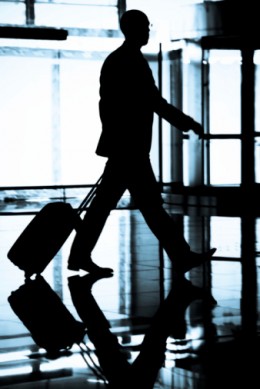 Traveling the world, visiting an exciting new location every day, seeing the world from 40,000 feet about the ground … sounds like a dream, right? But pilots and flight crews face risks that other occupations often do not.
Traveling the world, visiting an exciting new location every day, seeing the world from 40,000 feet about the ground … sounds like a dream, right? But pilots and flight crews face risks that other occupations often do not.
Numerous studies have linked health conditions to frequent flying. From increased exposure to UV rays and cosmic radiation to deteriorating eyesight, those who fly often must take extra measures to protect themselves from health risks. If you are a pilot, on a flight crew, or fly very frequently, you could be at risk for any of these conditions.
Skin Cancer — Airplane windshields are made of polycarbonate plastic or multi-layer composite glass and do not completely block UV-A or UB-B ultraviolet radiation. Thus, airline pilots have a higher risk of skin cancer — as high as twice the risk for melanoma in the general population. Consider this fact: Flying for just an hour at 30,000 feet is equivalent to 20 minutes on a tanning bed. In addition, UV exposure levels could be higher when pilots are flying over thick clouds and snow due to the reflection. Cosmic radiation exposure is also a significant concern because women who pilot and crew aircraft are 30% more likely to develop breast cancer.
What can pilots and flight attendants do? Wear sunscreen every time you fly and reapply it often. Also be sure to get regular wellness exams.
Deteriorating Vision — Good eyesight is essential for pilots operating aircraft. While natural aging brings gradual changes in the structure of a person’s eyes and to their quality of vision, those changes appear to happen more rapidly for frequent flyers. Researchers at Johns Hopkins University’s Bloomberg School of Public Health retrospectively examined the visual performance of over 3,000 regional and air-taxi pilots as recorded in their aeromedical certification records filed with the FAA. According to the study, 419 of the 3,019 pilots had serious vision problems, including corneal problems, glaucoma, and cataracts.
What can pilots do? Keep up with regular eye exams because early detection is the key to controlling the decline in your vision. Wear protective eye wear whenever outside and consume plenty of carotene-rich foods like carrots.
Deep Vein Thrombosis (DVT) — In recent years, DVT has received increased coverage partly due to some high-profile deaths of airline passengers. It turns out that the risk is also quite high for pilots, whereas flight attendants, who move about the cabin quite a lot, are not at as high a risk. Dubbed ‘economy class syndrome’ for its potential effects on air travelers forced into cramped spaces with limited mobility, DVT is just as deadly for pilots who cannot move about a cramped cockpit to exercise their lower limbs and reduce the risk of blood clots in the legs.
What can pilots do? Get regular workouts and keep your weight in check. Stand when you can and stretch and wriggle your legs and feet when you can’t. Movement is the key to preventing DVT.
Being proactive about health both on and off an aircraft can counteract the negative health risks caused by frequent flying.
Contact L & L International if you need assistance in purchasing or selling a private jet.
You can reach our sales specialists today at sales@L-Lint.com, call us any time at +1.305.754.3313, or visit us online.